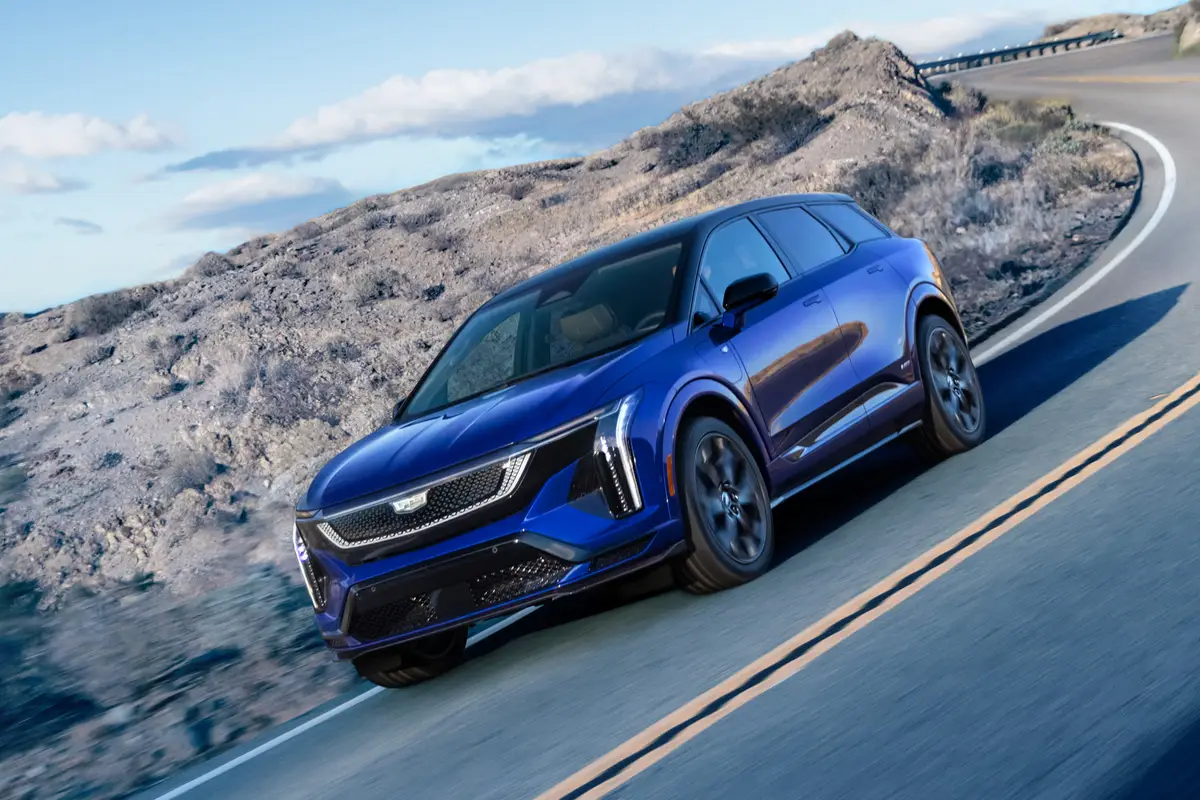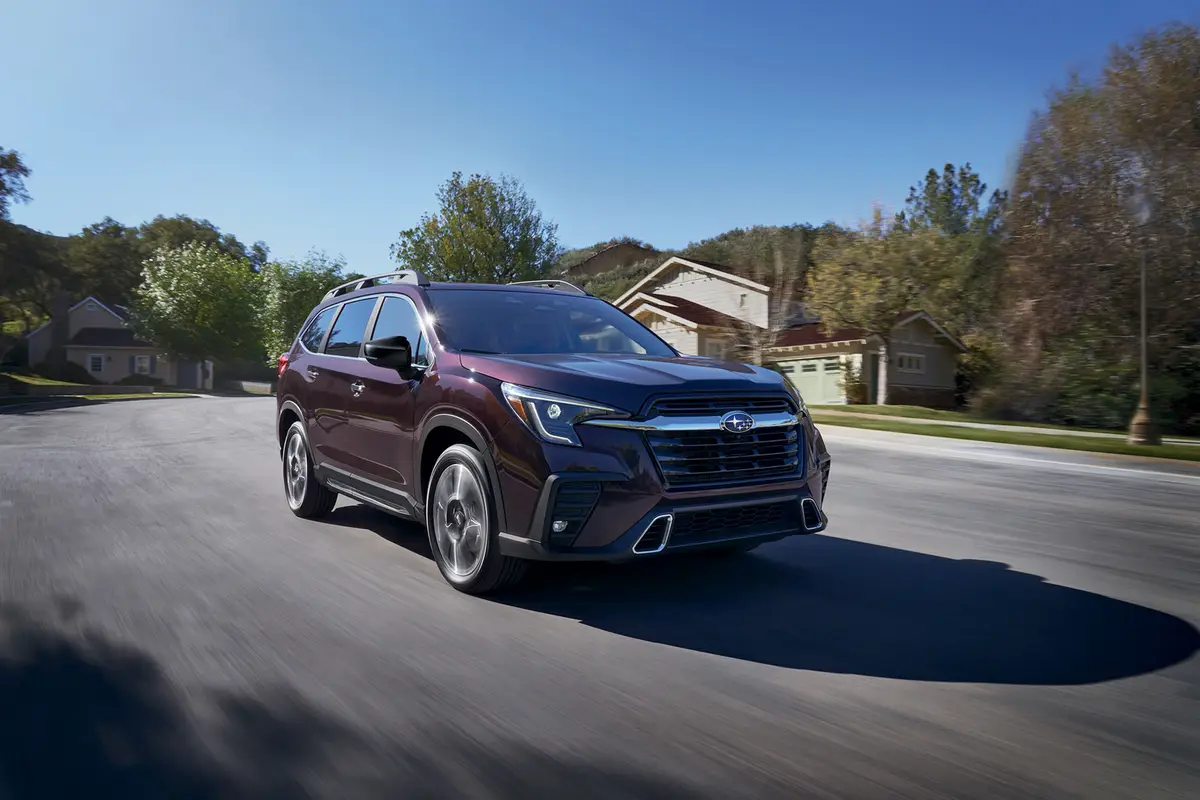Boston.com's view
There was a joke that made the rounds back in 1998 when John Glenn, at 77 years old, went back into space aboard the shuttle.
He’d be the first senior citizen to circle the earth with his turn signal blinking all the way.
Ba-da-bing, Ba-da-boom!
And on earth, he’d drive a Cadillac.
That wasn’t part of the joke, but it does speak to a problem that has plagued what was America’s top luxury brand. Its drivers got too old. The image of a small elderly man at the wheel of a boat of an automobile, turn signal in perpetual click, was not far off the mark.
But John Glenn might well like the direction Cadillac is taking these days. The former jet pilot would appreciate a design scheme, creeping through Caddy models, that seems straight from the Stealth fighter hangar.
It’s a multifaceted design — literally — in that new Cadillacs are all sharp angles, multiple planes, and faceted like a cut diamond.
You can see it in this week’s test model, the 2003 CTS, an entry level ($29,350 base price) luxury sedan with a fine bit of performance tossed in.
We saw more of this edgy design when the new SRX wagon/minivan (from Cadillac, no less) was unveiled earlier this month, and we’ll see it again in the upcoming XLR two-seat roadster.
This is a love it or hate it look. Sort of Mercedes with knife edges. I love it.
I like the facets, inside and out. I like the huge, stacked headlights and the big, vertical taillights. I like the sleek lines, the chapped and raised rear end. But most of all I like where this car was developed: on the Nurburgring in Germany, tortuous and twisting test track for some of the world’s finest performance automobiles.
If the Catera, which the CTS replaces, was a boring bust, the CTS could be a booming bust-out for a car company looking to attract younger, more aggressive buyers.
Which is not to say they are delivering a rocket ship here, or that Cadillac is skimping on luxury.
Leather is standard throughout the CTS. So is traction control. And an eight-way power driver’s seat, front driver, and passenger air bags and side air bags as well as front to rear head curtain side impact bags. That list goes on and on.
Opt for the sport package, as tested ($3,500), and you get an eight-way power front passenger seat, wood trim, an alarm system, sport tuned suspension, stability control, 17-inch wheels with V-rated tires, an upgraded sound system, and a power sunroof, among other goodies.
For its first model year, the CTS is powered by a 3.2-liter, 220-horsepower, V-6 engine. Some have said this is not enough oomph for this car, yet I find it would be plenty of power for what most drivers seek. Those looking for more power should wait until the 2004 model year, when a 3.6-liter engine becomes available.
The CTS comes with either a 5-speed manual transmission or a 5-speed automatic. I had the automatic, and while it was quiet and smooth in its shifting, it’s a good thing the manual is available because lots of folks looking for performance from their sedan want to do their own shifting.
The 3.2-liter engine moved the CTS (nearly a 2-ton car) with an efficient surge of power, taking it off the line moderately quickly, but really coming into its own when it came time to boot it up to pass.
On the highway, it was rock solid in its stability, quiet, and as smooth as many cars costing far more money. On twisting back roads it held flat in rapid cornering with virtually no body roll. There was a bit of nose dive in rapid, hard braking, but we’re stopping a lot of weight here. It’s got to be distributed somewhere.
The CTS suspension features coil springs, upper and lower A-arms, tube shocks, and antiroll bar up front and, in the rear, a multilink setup with coil springs, tube shocks, and antiroll bar.
The interior is obviously the product of careful thought, with complementing textures running through the black and tan dash and door treatments, wood ouches at the wheel and on all four door handles and shifter (accented by a nifty silver cap).
The angular exterior lines are repeated inside atop the door panels, making for a seamless design transition from outside to inside. I particularly liked the protruding control pod at center dash. It houses controls for sound, the navigation system, and climate control. And it is angled nicely toward the driver for easy viewing and access.
The trunk is not huge for a sedan and much of its potential space is eaten up by intruding wheel wells. It does have the advantage of a locking through-door into the back seat when the center arm rest is down. That’s good for hauling skis or other long objects.
I found the trunk lid to be a bit heavy and felt it could use a bit of boost. It’s not that easy to lift with one hand while the other holds a bag.
Cadillac, gone edgy and angular, is taking a risk as it attempts to change its image.
That’s a good thing, especially from General Motors, where for too long too many cars that all looked the same got stamped out, one after another.
Nice touch: The toggle switch operation of the five dash-mounted front air vents. Seemingly endless in adjustability and very easy to use.
Annoyance: The bins in the front door panels are way too shallow to be of much use. Won’t even hold a road atlas.
2003 Cadillac CTS
Base price: $29,350
Price as tested: $38,990
Horsepower: 220
Torque: 218 lb.-ft.
Wheelbase: 113.4 inches
Overall length: 190.1 inches
Width: 70.6 inches
Height: 56.7 inches
Curb weight: 3,640 lbs.
Seating: 5 passengers
Fuel economy: 19.6 miles per gallon
Source: General Motors, Cadillac Division; fuel economy from Globe testing.
Latest news



